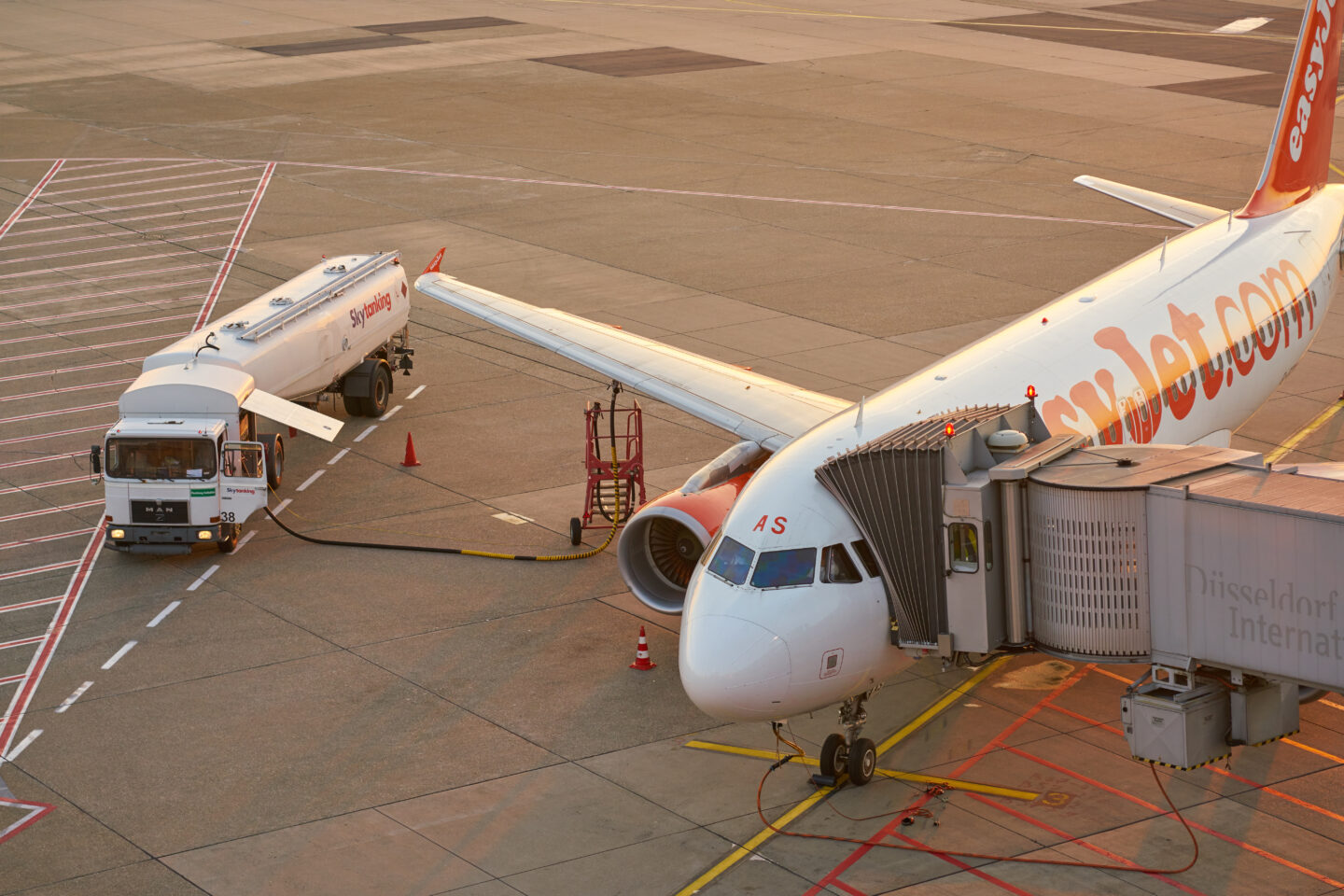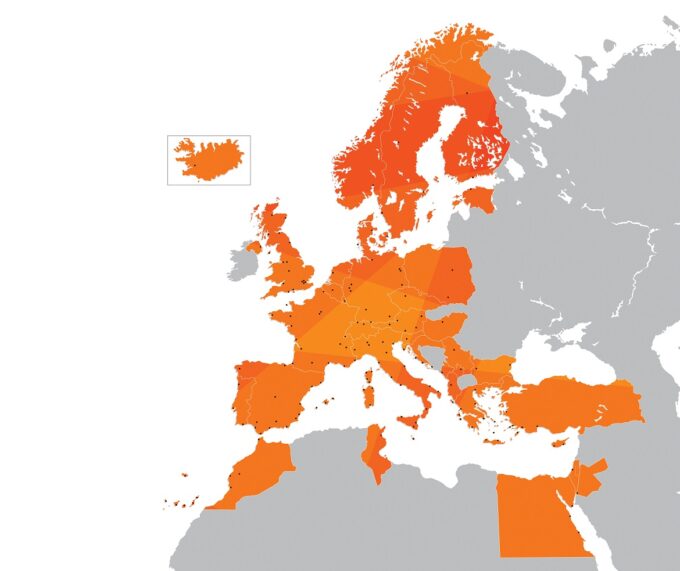
Why supply chain reorganization now tops the CEO’s agenda
Amid mounting geopolitical tensions, CEOs must take direct control of supply chain resilience, says IMD’s Carlos Cordon...

by Nirmalya Kumar Published 13 June 2023 in Management • 6 min read
In 1992, the European Union passed legislation to de-regulate the airline industry, revolutionizing the sector and leading to a proliferation of low-cost carriers. Among these was easyJet, founded in November 1995 by Greek-Cypriot entrepreneur Stelios Haji-Ioannou with a £5m loan from his shipping tycoon father.
From its humble beginnings with just two leased aircraft operating out of Luton Airport, the company turned a profit within three years by adopting an efficiency-driven operating model, maintaining high levels of customer satisfaction and creating brand awareness – sometimes through highly publicized and often full-scale attacks on its competitors. By November 1999, it owned and/or leased 18 Boeing 737-300s and flew 27 routes in Europe.
Despite its early success, easyJet still faced internal challenges that were typical of many startups, as well as growing competition from other small, low-cost carriers and established European carriers. Undeterred, Stelios relished the challenge to continue with his mission “to offer low-cost airline services to the masses.” Of the 80 carriers that had begun operations following European de-regulation, 60 had already gone bankrupt by 1996. EasyJet was not among them. It would go on to become one of Europe’s leading low-cost airlines. So how did easyJet succeed where others failed?
It’s a myth that innovators receive ideas like a thunderbolt in the night. In reality, 90% of innovation is copied. The same was true at easyJet. Stelios modelled easyJet after Southwest Airlines, a successful low-cost carrier in the United States. Before launching, he even met with Southwest’s CEO, Herb Kelleher. Like Southwest, easyJet used one type of aircraft, point-to-point short-haul travel, no in-flight meals, rapid turnaround time, and very high aircraft utilization.
Stelios also added his own twist.
While easyJet started with a call center, the airline was quick to take advantage of the rise of the internet and very quickly pivoted to internet-only sales. In March 1999, online sales then accounted for 15% of revenues, but by October 1999 this had soared to 60%. By avoiding computer reservation systems and travel agents, Stelios believed that he saved around 25% of total operating costs. In 1998, Stelios enraged travel agents in Greece by selling cheap daily flights to Athens and flaunting his commission-free service by advertising to “forget your travel agent.” The travel agents took him to court, but Stelios won.

In addition, easyJet was the first airline to get rid of in-flight meals. While others gave passengers a free drink or peanuts, easyJet put everything up for sale. The airline calculated that it saved £14 per person by not offering a meal service. It also decided to give a commission from on-board food sales to its cabin crew so that they would go the extra-mile on customer service – another key differentiating factor.
As with any disruptive model, the entrepreneur won’t know all the answers at the start, so continuous learning is essential to make the business model sustainable in the long term. While Google was not the first search engine, Amazon was not the first online retailer, and Facebook was not the first social media platform, what sets all these companies apart is their ability to pivot to survive.
Another reason that I believe easyJet was successful is because it followed the ‘3V’ model: value for the customer, value proposition, and value network. The company knew it was targeting customers who pay for their travel from their own pockets and are therefore looking for a product that is good value. Consequently, its value proposition was a consistent and reliable service at fares appealing to leisure and business markets. If a flight arrived more than four hours late, Stelios instructed his staff to write a letter of apology with his signature and to issue a full refund.
When it came to how the airline planned to deliver this value proposition, easyJet initially decided to outsource many of the airline’s operations because it lowered costs and increased efficiency. Typically, the airline provided the planes, pilots, cabin crew, marketing, and salespeople, while subcontractors handled all other responsibilities from check-in to the on-site customer information desk.

Because of this reliance on subcontractors, easyJet organized workshops, role-reversal exercises, and simulations to explain its objectives and expectations. This was critical to ensure every player in the process could work towards easyJet’s objective of a 20-minute turnaround at the gate while maintaining safety. The company evaluated subcontractors not only on quantitative criteria, such as percentage of on-time flights, but also on qualitative criteria, such as understanding of the easyJet concept.
Most disruptors will grow up to become incumbents as they move from launching new ideas to perfecting and executing the existing model. Once they get to this stage, they often – but not always – need new leaders. While the founder of a startup needs to have a unique idea, an appetite for risk, and an ability to keep pivoting and fixing to achieve a vision even when the odds are against them, the CEO of an incumbent company needs to be good at setting up processes, perfecting those processes, and sticking to them.
On a few occasions, entrepreneurial startup founders have successfully gone on to become CEOs of established companies by evolving their own leadership styles and learning from those around them. The two best examples in my opinion are Bill Gates, founder and former CEO of Microsoft, and Michael Dell, Founder, Chairman, and CEO of Dell Technologies.
A serial entrepreneur, Stelios decided to step down as CEO of easyJet in November 2002 to focus on growing his other ‘Easy’ companies, including EasyInternetCafe and rental car business easyCar. Stelios had also faced pressure from major shareholders that had wanted to see him less intimately involved with the airline, but he also admitted that there are better people to run established companies.
Unlike entrepreneurs who often have multiple failures, managers are hired because they have proven their ability to run processes and stick to budgets. While the leaders of disruptors are all about exploration, those who run incumbents know how to exploit a known business model to the max. As the saying goes, out of 100 innovators, 99 fail. Out of 100 managers, however, 99 succeed.
easyJet: The Web’s Favorite Airline by Nirmalya Kumar and Brian Rogers was the No. 1 case study sold by The Case Center between 1973 and 2023. Case studies, which posit real-life business situations, are popular teaching resources that enable participants to analyze real business scenarios and hone their leadership capabilities.
Order the case study here.

Professor of Marketing of the Lee Kong Chian School of Business at Singapore Management University
Nirmalya Kumar is Professor of Marketing of the Lee Kong Chian School of Business at Singapore Management University. He has served on the Boards of ACC Limited, Ambuja Cements, Bata India, BP Ergo, Defaqto, Tata Capital, Tata Chemicals, Tata Industries, Tata Limited (UK), Tata Unistore, Ultratech, and Zensar Technologies. When Kumar wrote the easyJet case study, he was a Professor of Marketing at IMD.

25 April 2024 • by Carlos Cordon in Innovation
Amid mounting geopolitical tensions, CEOs must take direct control of supply chain resilience, says IMD’s Carlos Cordon...

19 April 2024 • by Michael R. Wade in Innovation
The EV pioneer’s once-unrivaled dominance is being tested by declining sales, fierce competition, and questions about its commitment to sustainability and innovation. IMD’s Michael Wade examines Tesla’s strategic direction and leadership. ...

17 April 2024 • by Jim Pulcrano in Innovation
After 25 years of selecting startups to work with IMD’s MBA and EMBA participants, Jim Pulcrano examines the factors that may have helped identify promising young ventures that go on to prosper....

15 April 2024 • by Annabelle Gawer in Innovation
AI-as-a-Service will impact executives and their strategic decisions. It’s crucial to assess the benefits and repercussions it will bring....
 Audio available
Audio availableExplore first person business intelligence from top minds curated for a global executive audience